Italian, circa 1540, The Arundel Zodiac
Lot 11. Italian, circa 1540, The Arundel Zodiac, carnelian, within a mid 16th-century, emamelled gold pendant mount set with diamonds and rubies, intaglio: 43mm., 1 3/4 in., 116mm., 4 1/2 in. overall. Estimate: 120,000 - 180,000 GBP. Lot sold: 559,500 GBP. Courtesy Sotheby's.
Provenance: Possibly Federico II Gonzaga, Duke of Mantua (1500-1540);
by descent in the Gonzaga collection, Mantua;
certainly Daniel Nys Gem wundercabinet;
Thomas Arundel, 14th Earl of Arundel (1585-1646), acquired from Nijs on 5th or 15th November 1636, Drawer 5 (E) (Theca quinta) in the Arundel gem cabinet;
thence by family descent to George Spencer, 4th Duke of Marlborough (1739-1817), Blenheim Palace, Oxfordshire;
thence by family descent to John Winston Spencer-Churchill, 7th Duke of Marlborough (1822-1883), Blenheim Palace, Oxfordshire;
David Bromilow, Bitteswell Hall, Lutterworth, until 1898;
by descent to Julia Harriet Mary Jary (née Bromilow);
Christie’s, London, 26 June 1899, lot 275, £900;
there acquired by Ready Friedrich Ludwig Gans (1833-1920), Frankfurt;
Bachstitz Gallery, the Hague, c.1920;
Saint Louis Art Museum, Missouri, US, acquired 1925, de-accessioned circa 1940;
Walter T. and Lucie Bigelow Rosen (1890-1968), Rosen House, NY, by descent in USA until 2010;
private collection, United Kingdom.
Literature: 17th-century Latin catalogue of the Arundel Gems, E, p. (29-30), 35, no.11;
Andrew Fountaine catalogue, 1731, p.8, no. 11;
1782 MSS Arundel : p. 6, £80;
Archaeological Journal, 1862, vol. 19, no. 386, p. 105;
Marlborough Album: photographs of the gems, 1875, pl. 10, 3-4;
Friedrich Gans art collections, Frankfurt A.M., elephant folio, n.d., c. 1920, plate 32;
Bulletin of the City Art Museum of St Louis, X, July 1925, accessions;
J. Boardman, D. Scarisbrick, C. Wagner and E. Zwierlein-Diehl, The Marlborough Gems, Oxford, 2009, no. 114, pp. 78-9.
The Hague, Bachstitz Gallery, circa 1920;
St Louis, Missouri, St Louis Art Museum, circa 1925-1940
Note: This exceptional Renaissance jewel was once in two of the greatest gem collections: the Arundel and Marlborough collections. Like most of the Arundel gems, it is likely to have once been owned by the Gonzaga dukes of Mantua (Boardman, op. cit.). The Arundel Zodiac, is centered by a superb and rare 16th-century intaglio carved with Jupiter astride an eagle, flanked by Mars and Mercury, and Neptune underneath. The composition which relates to a design by Raphael, engraved by Marcantonio Raimondi, is an examplar of the perfect, harmonious, Renaissance composition espoused by Giorgio Vasari. The whole is encircled by a frieze with the signs of the Zodiac. Only three such Zodiac gems exist from the period, in: the State Hermitage Museum, St Petersburg (inv. no. 3706); the Cabinet des medailles, formerly the French royal collection; and the present Arundel Zodiac. An impression of the intaglio is seen on a medal with a bust of Fulvio Orsini, providing a terminus ante quem of 1575. The verso is enamelled en basse taille with a virtuoso depiction of a crane with multi-coloured plumage amongst exotic flowers and laurels, which compares with some of the finest surviving Renaissance enamelled jewels in public collections.
The Arundel Zodiac: An Early Recorded Provenance
The Arundel Zodiac was acquired by Lord Arundel on 5th or 15th November 1636 from the Flemish merchant and connoisseur Daniel Nijs, who famously sold the Gonzaga paintings to Charles I. The sale contract records:
This Nijs freely sells to His Excellency his table, or cabinet, in which there are drawings, pictures, medals, cameos, agate intaglios, antique corniola, crystal intaglios, jewels … described distinctly in a handwritten books with an inventory.
(as quoted by Anderson, op. cit., pp. 172-176)
The Arundel Zodiac appeared in drawer five of the cabinet and is described in a 1717 Latin catalogue of the Arundel gems which likely derives from a 17th-century Arundel catalogue (figs. 1, 2):
Zodiaci duodecem signa in quorum medii Jupiter et Aquila intra Martem et Mercurium stantes, ad ejus pedes, Neptunus cum tridente Oceano emergit, Severum plane spectat cum Caracalla et Geta, cum in Britanniam traductus copiis, eam penitius subegit ab ortu ad occasum a parthis nempe ad Britannos, perpetuum gloria cursum absolvens in Corniola superba coperta d’oro smaltato con cinque Diamenti cinque rubini e tre perli orientale. 2 . ob integritatis praestantium, haec gemma est ea quae in Regis Galliarum cimelio asservatur, praeferenda. V. P. Stephanonium.
Boardman et al have argued that the majority of Nijs’ gems came from the collection of the Gonzaga dukes of Mantua: 'It is by no means certain that the Arundel gems derived dominantly from the collections at Mantua, but there is very strong circumstantial evidence that almost all do, and some direct evidence that many do' (op. cit., p. 1).
Nijs had already negotiated the sale of the Gonzaga paintings to Charles I in 1627-1628. The Gonzaga had been determined to sell their jewels last, as is evidenced by a letter written by Alessandro Striggi, Mantuan Grand Chancellor on 8 September 1627:
‘I do not criticise the disposal of paintings for which jewels, which are worth three times the price of the former, have been pawned.’
The Gonzaga inventories are sporadic and, of all the Arundel gems, only the famous Felix Gem in the Ashmolean, can be located with certainty within the Gonzaga collection, being referenced in a 1483 catalogue of Francesco Gonzaga (inv. no. AN1966.1808; Boardman et al., op. cit., pp. 96-97). The absence of any mention of the Gonzaga provenance in the Nijs documents is perhaps a consequence of the portability of the jewels and the delicate nature of the circumstances of their disposal, given that the jewels were the last remaining vestiges of the once celebrated Gonzaga collection.
An Exceptional Renaissance Jewel
The Arundel Zodiac is one of only three such astrological gems. At its centre is a perfectly conceived Renaissance composition centered on four of the principal members of the Dii Consentes, the twelve major deities of the Roman religion, whose statues adorned the Pantheon in Rome.
At the centre, Jupiter, supreme ruler of the gods and heaven, sits astride an eagle, and is raised on an arched platform, his sons Mercury, the messenger god, and Mars, god of war, flanking him. Underneath, Neptune, the sea god, rears upwards from the waves, his trident in his hand. The pyramidal arrangement of the group is consistent with the Renaissance virtues of harmonious, stable and unified composition espoused by Giorgio Vasari, and references Raphael's 1516 design for the frontispiece of the Aeneid, which was engraved by Marcantonio Raimondi. As in Raphael's design, the four gods are encircled by the twelve signs of the zodiac contained in a segmented band.
Only two other such 16th-century Zodiac gems exist, both carnelian and of similar size and both originally in princely collectors cabinets.
The first, in the Hermitage Museum, St Petersburg (inv. no.3706; described as Italian, 16th Century, 5.4cm diameter) (fig. 3), is particularly close to the present gem and is likely to have been carved by the same engraver. Its provenance is the collection of Otto Henry, Elector of Palatine (1502-59), who assembled the greatest Renaissance library in Germany, as well as a collection of gems, which survived intact until it was sacked during the Thirty Years War in 1622. The Palatine collection was partially reassembled in Heidelberg Castle and in the Vatican Library (Kagan and Neverov, op. cit., p. 77). The gem has suffered a fracture which runs across the centre with a loss to the face of Mars, perhaps from the time of the plundering, and is contained in a plain later mount.
fig. 3. Intaglio: Jupiter, Mercury with Cupid, Mars and Neptune surrounded by the signs of the zodiac, Italy, 16th century. Carnelian, gold, diameter: 6.2cm. Entered the Hermitage in 1787. From the collection of the Duke of Orleans. Previously in the Palatine Collection. © 1998–2021 The State Hermitage Museum.
The other comparable gem is in the Cabinet des Medailles, BnF, Paris (inv. no. 58.2391; 6cm diameter) (fig. 4). This is of exceptional quality and seems likely to have been in the collection of Peirsac (1580-1637), the eminent French antiquarian of the early 17th century, and was acquired by the French Royal Collection, recorded in an inventory of 1664 (Aghion, op. cit., p. 133, no. 34). It is now considered to be 16th-century and became widely known through the publication of Mariette in 1750 (op. cit., vol II, p. 1, no.1).
fig. 4. Intaglio, Italy, 16th century. Carnelian, gold, diameter: 6 cm. Entered the French Royal Collection, recorded in an inventory of 1664. From the collection of Peirsac (1580-1637), the eminent French antiquarian of the early 17th century. Cabinet des Medailles, BnF, Paris (inv. no. 58.2391).
The style of engraving and the use of carnelian is further comparable with the celebrated Livre d'heures de François Ier, dating to 1532-1537, which was recently acquired by the musée du Louvre (inv. no. RFML.OA.2018.1.1.1) (fig. 5). Note the similarly expressive, stylised, figures and the pyramidal arrangement of the Crucifixion scene. The choice of intaglios to adorn François' book of hours underscores the princely desire for glyptics in the period.
fig. 5. Livre d'Heures de François Ier. 1532-1538. Manuscrit enluminé de 150 folios avec 16 miniatures en pleine page. Couverture avec un intaillé en cornaline représentant le Christ en croix entre Saint-François d'Assise et Saint-Jérôme. Musée du Louvre (inv. no. RFML.OA.2018.1.1.1).
The early inventory reference of the Arundel Zodiac (citied above) makes specific reference to this Royal French gem, noting the observations of ‘P. Stephanonium’ which must relate to Pietro Stefanoni, a highly respected antiquary in Rome and friend of Lord Arundel. The inventory records Stefanoni’s comments concerning the gem being of superior quality to that in the collection of the King of France. When the Arundel gem is next citied in the catalogue of the English antiquarian Andrew Fountaine, 1731, it is described as ‘very fine’ and mirrors the earlier comments of Stefanoni, remarking:
‘This Intaglia is so well preserved, that it is to be preferred to that which is in the King of France's Cabinet’ (FOUNTAINE, OP. CIT., P.8, CASE E, NO. 11).
A further record occurs in 1782 when the Arundel gem listing mentions the gem and a valuation of £80.
The Arundel Zodiac is not merely exceptional due to its rare cosmographical intaglio, but also because of its superb jewel mount, which, unusually, is specifically mentioned in the 1717 Arundel Latin inventory, underscoring that the jewel was prized in its entirety. To the verso, the glyptic is encased within an elaborate 16th-century bejewelled pendant, and framed with rubies and diamonds interspersed with enamelled gold fruits, flowers and strapwork. The arrangement is close to that seen in a number of other 16th-century jewels today in institutions. Compare, for example, with the French, circa 1550-1575, Hatbadge with St George and the Dragon in the Waddesdon Bequest at the British Museum (inv. no. WB. 172; cf Thornton, op. cit., pp. 204-211, fig. 6). Perhaps the closest comparison, however, is found in a jewel mounted with a cameo of Meleager and Atalanta in the Kunsthistorisches Museum, Vienna, which has been catalogued by Distelberger as Milanese, mid 16th-century (inv. no. XII 156; op. cit., pp. 108-109, no. 31). Note again the use of diamonds and rubies and, in particular, the similar enamelled and interlaced strapwork decoration. Compare also with another North Italian, circa 1540 jewel, with similar mount, also in the Kunsthistorisches Museum (inv. no. XII 135; Distelberger, op. cit., p.109, no. 32).
fig. 6. St George and Dragon, 1550–75 (?). Enamelled gold, precious gems. Collected and bequeathed to the British Museum by Ferdinand Anselm Rothschild.
The recto of the Arundel Zodiac is emblazoned with a virtuoso rendering of a crane enamelled basse taille and enveloped in leaves and flowers. These leaves are very close to those seen on the reverse of a Renaissance pendant in the Alsdorf collection at the Art Institute of Chicago which is adorned with an impresa of the Medici in the form of laurel trees (inv. no. 1992.297) (fig. 7). The Alsdorf pendant has been dated to circa 1525-1550 and comes from the collection of the dukes of Hamilton. Raff has suggested that this and two similar pendants may have been commissioned by Catherine de' Medici (1519-1589), Queen Regent of France, who brought many cameos and intaglios from Florence to France; the Chicago pendant may therefore be of French origin.
fig. 7.
Although, compositionally different, the basse taille enamelling and the use of azure blues and greens, as well as floral motifs, can also be compared with the famous Fettercairn Jewel which was sold in these rooms on 28 March 2017, lot 224, and is now in the National Museums of Scotland (inv. no. X.2017.45). The Fettercairn Jewel is thought to have been made by French goldsmiths probably in Scotland, perhaps for Catherine de' Medici's daughter in law, Mary Queen of Scots, circa 1560-1580. The enamelling on the present Arundel Zodiac, is, however, more sophisticated, and the bird, although fantastical with its multi-coloured plumage, is mesmerisingly naturalistic.
Diana Scarisbrick has suggested that the Arundel Zodiac, which is today mounted as a pendant, may originally have been conceived as a hatbadge. This suggestion suggestion is given added credence with a comparison of the frame and the aforementioned Waddesdon jewel.
The Zodiac and the Renaissance: Manilius and Ficino
The relationship between the zodiac, the twelve constellations, and man can be traced back in literature to a Latin poem by Marcus Manilius, titled Astronomica of the early 1st century AD, arranged in five books, and re-discovered in the early 15th century. For Roman interest in astrology note the 1st or 2nd-century AD Zodiac Sculpture with Jupiter in the Villa Albani, Rome (fig. 8). From the outset Manilius introduces his subject as one in which the science of celestial bodies affects life on earth and the fate of individuals:
‘By song I undertake to draw down from heaven the divine arts and the stars, knowlegeable of fate, which govern the diverse fortunes of men, a work of divine reason…’ (AS QUOTED IN VOLK, OP. CIT.)
Manilius viewed the zodiac as playing a central role in determining man’s fate, a belief in which manifested itself in the importance of horoscopes amongst the Roman elite:
‘It is more pleasing to know in depth the very heart of the universe and to see how it governs and brings forth living beings by means of its signs [the zodiac] … fate rules the world ... our end depends on our beginning.’
Manilius’ ideas proved popular in the medieval period as an element of astrological medicine, in which it was held that man's physical composition corresponded to the relationship of the zodiac upon the external anatomy and the planets on the internal organs (Bobus, op. cit.). Hence the concept of ‘zodiac man’ which was an important feature of medieval manuscripts.
In the early Renaissance there was a renewed interest in Manilius. Ficino the influential and widely read Renaissance Neo-platonic philosopher, in his Commentary on Plato’s Symposium perpetuated the significance of the zodiac, as derived from Manilius:
‘Agathon thinks that the arts were given to humanity by the Gods because of love: the art of ruling by Jupiter….Twelve Gods are in charge of the twelve signs of the Zodiac: Pallas of Aries, Venus of Taurus, Apollo of Gemini, Mercury of Cancer, Jupiter of Leo, Ceres of Virgo, Vulcan of Libra, Mars of Scorpio, Diana of Sagittarius, Vesta of Capricornus, Juno of Aquarius, and Neptune of Pisces….By these all the arts are handed down to mankind. The signs infuse the powers for each of the arts into the body, and the Gods who are in charge of them, into the soul…’ (as quoted in Kraske, op. cit. p. 195).
As well as the influence of this contemporary interest in the zodiac, the conception of the Arundel Zodiac seems to be much inspired by another of Ficino’s publications, the De vita libri tres, 1489, which contains extensive astrological theories (Kraske and Clark, op. cit.). The resplendent gold frame set with diamonds and rubies evokes the significance of light (rays) in astrology, which was believed by scientists to be the active force and first corporeal form of the universe, as demonstrated by the creation. Ficino observes with regard to these materials that:
‘..gems and metals, although they seem too hard for accepting a celestial influence, nevertheless retain it longer … by their hardness they also retain the vestiges and gifts of the life of the world … for a very long time after being rooted out ... they are judged to be apt materials for capturing and holding celestial things.’ (Ficino, op. cit. chap xiii, p. 309)
When combined with the imagery of the gem, the Arundel Zodiac would have been regarded as an extremely potent object. As Ficino states:
‘…you should not doubt, they say, that the material for making an image, if it is in other respects entirely consonant with the heavens, once it has received by art a figure similar to the heavens, both conceives in itself the celestial gift and gives it again to someone who is in the vicinity or wearing it.’ (FICINO, OP. CIT. CHAP XVII, PP. 329,333)
The vibrantly enamelled crane likely serves as a representation of the terrestrial world, which following upon Ficino’s theory, is given form by celestial rays represented on the obverse and thus empowered to radiate celestial qualities (gifts) to enrich the intellect (Spiritus) of the viewer. Jupiter’s central placement on the intaglio reflects Ficino’s belief that this God is ‘most similar to the Sun in gifts that are many and excellent ... and that they are the best of friends’ (Ficino, op. cit. chap iv, p. 259) Ficino further emphasises the importance that:
‘Nor should one simply look at it [the figure of the universe] but reflect upon it in the mind…You, however, will fashion a better image within yourself when you know that nothing is more orderly than the heavens and that nothing can be thought of that is more temperate than Jupiter’.
Such was the acceptance of astrology that Ficino when asked for advice by the King of Hungary in 1489, he responded to recommend entrusting his health to doctors and astrologers who study the stars for cures since this is ‘science and common sense’.
However, astrological beliefs were not exclusive to the highest intellectual and political sections of society, but permeated through the culture of Renaissance Italy to the lower levels. The astronomer Bartolomeo wrote to Marquis Ludovico Gonzaga regarding the completion of the astrological clock tower Piazza Erbe, Mantua, 29 June 1473, that it not only tells the people the time but ’the critical days in which infirmities are possible.’
Federico Gonzaga, Jupiter and the Zodiac
Whilst the Arundel Zodiac can evidently be securely rooted in the early 16th-century Renaissance, given that most of the Arundel gems likely originated with the Gonzaga, it is possible that the intaglio could be associated with Federico Gonzaga, who was preoccupied by both of its subject matter, Jupiter and astrology. A pupil of Ficino, the humanist Mario Equicola, was based at the Gonzaga court in Mantua, Federico has been termed the ‘terrestrial Jupiter’ because of his affiliation to the supreme ancient God, from whom it would seem he considered himself descended (Splendours.., op. cit., p. 180). This is particularly evident in Guilio Romano’s decorative scheme for the Sala di Giove in the Palazzo Ducale (1530s). This also included a series of mythological panel paintings dedicated to the rule of Jupiter, with a particular focus on his youthful life. One such panel The Nurture of Jupiter (mid-1520s) now in the Royal Collection (inv. no. RCIN 402781) seems to have formed part of Nijs' sale of the Gonzaga paintings to Charles I. Federico’s affection for Jupiter was also reflected in smaller scale works, for example, the impresa of Mount Olympus on a medal (c.1520).
Another of Federico’s great preoccupations, that of Astrology, also features prominently in his palatial decorations. These cosmological vault decorations were in keeping with Ficino’s advice to ‘construct a chamber, vaulted and marked with these figures and colours [of the universe], and he should spend most of his waking hours there and also asleep' (as quoted in Quinlan-McGrath, op. cit., p. 165). The frescos of the Sala Dei Venti by Giulio Romano in the Palazzo del Te, combined both the Olympian theme and the astrological (Gombrich, op. cit., pp. 189-201) (fig. 9). A Latin inscription over the entry door introduces the room’s astrological theme as ‘For it is undecided which stars may lay hold of you’. The ceiling is centred by the Gonzaga emblem of Mount Olympus, here representing the heavens, surrounded by the twelve signs of the zodiac, which connect with sixteen medallions illustrating related constellations. The scheme is much indebted to Manilius and his disciple Firmicus.
fig. 9. Giulio Romano ceiling decoration in the Palazzo del Te.
Federico’s fascination in his own astrological sign is further expressed in the re-decoration of his father’s apartments in the Castello di San Giorgio (Lippincott and Signorini, op. cit., pp. 244-247). The vault he commissioned is centred by Hercules, who resembles Federico, and is divided into twelve segments with a line running through each of the zodiacal signs beneath which are the associated gods. The planetary arrangements in the ceiling decoration replicate those of Federico’s horoscope or Libra fortunae, devised by his personal astrologer Lucas Gauricus as Libra, which he later published in Tractatus astrogicus, 1552.
There is a further contextual reference for the Arundel Zodiac through Gonzaga and Raphael. The artist painted Federico’s portrait and included a further portrait of him in his representation ‘School of Athens’, depicting theologians reconciling philosophy and astrology with theology. In the astrology section Federico appears as described by Vasari: ‘Among them, in the figure of a young man with a beautiful form who is throwing open his arms in amazement and bowing his head, is the portrait of Federigo II, Duke of Mantua, who was in Rome at that time’. (as quoted by Quinlan-McGrath, op. cit., p. 186).
In an unfinished project to publish an illustrated edition of Aeneid in 1516, the frontispiece known as the Quos Ego was designed by Raphael and reproduced in prints by Marcantonio Raimondi (see the engraving in the British Museum, inv. no. 1910,0212.340) (fig. 10). At the top is represented a zodiac gem centred by Jupiter, Mercury and Venus and Cupid of similar composition to the Arundel Zodiac, perhaps its prototype. As Raphael’s brilliant pupil and collaborator of Raimondi, Guilio Romano became Federico Gonzaga’s chief designer, creating the Palazzo del Te, and was also responsible for supplying engraved gems and jewels.
fig. 10. Marcantonio Raimondi, Neptune calming the tempest which Aeolus raised against Aeneas' fleet in central compartment surrounded by nine scenes from Book I of the Aeneid, 1516. Engraving © The Trustees of the British Museum
The Arundel Zodiac seems itself to have been widely known amongst cultivated circles in the 16th century since, newly identifiable here, a reproduction of it appears on the verso of a portrait medal of the Farnese librarian Fulvio Orsini, Rome (circa 1575) in the British Museum (inv. no. G3,IP.1130; Atwood, op. cit., pp. 425, nos. 1056, 1057, pl. 221). A further example in the same museum (inv. no. BNK,IM.20) shows the impression in relief and reversed, and other examples survive in important Italian medallic collections. As a humanist Orsini was naturally also fascinated by astrology. This is particularly reflected in his role conceiving of the decoration of the ‘Sala della Cosmografia’ in the Palazzo Farnese, Caprarola, for Cardinal Alessandro Farnese, in 1573-1575, and recorded in a series of letters (Quinlan-McGrath, 'Caprarola's...', op. cit., pp. 1045-1100). It is possible that the medal was conceived to commemorate the vault decoration, since the two are probably contemporaneous. Orsini formed a formidable collection of antique gems, recorded in a detailed 16th-century inventory, which was bequeathed to form the core of the surviving Farnese gem collection (Les Collections..., op. cit., p. 150). The circulation of the Arundel Zodiac or its impression for the medal may reflect close links between the Gonzaga and Farnese dynasties, for example, the antiquarian Gerolamo Garimberto (1506-75) adviser to Federico’s son, Guglielmo Gonzaga (1538-87), Duke of Mantua, and his nephew Cesare Gonzaga (1536-75), was on familiar terms with Alessandro Farnese and Fulvio Orsini (Brown, op. cit., pp. 32-58).
Zodiac gems and the ‘République des lettres’ in the early 17th Century
The zodiac gems continued to intrigue and captivate antiquarians in the early 17th century. These gems were discussed through correspondence amongst the scholars and artistic community of the ‘Republique de lettres’ which included Rubens, Peirsac, and Pietro Stephanoni, and of which Arundel was also part.
Of foremost relevance in the surviving correspondence are those between Nicolas-Claude de Peiresc (1580-1637), astronomer and antiquarian, to Jéröme Aléxandre. In 29 April 1617 Rome, Peiresc, discuss a cornelian gem with four figures in the middle within the zodiac. Peiresc doubts its antiquity since Virgo is represented with a Unicorn (rather than conventionally with wings and caduceus); this is probably the gem in his own collection now in the Cabinet des Medailles (Jaffé, op. cit., pp. 105-106, no. 23; Fauris de St-Vincens, op. cit., pp. 8-10, 36-37). Further correspondence, dated 3 December 1619, concerning another cornelian example with an additional cupid figure which is thought likely to be antique especially since Virgo is without the unicorn. Peiresc considers whether to ask the opinion of ‘M[onsieur]. Steponi’, (presumably Pietro Stephanoni, Roman antiquary, who is referenced in the early Arundel inventory). His posthumously published gem catalogue was dedicated to Lord Arundel and also featured a zodiac gem of similar type to those already discussed (Stefanoni, op. cit.). Peiresc discusses the theme of zodiac gems again with Rubens in 1621, mentioning three the size of a ducat; one of them with a detailed description: in the middle of the zodiac seated Jupiter, Neptune below, flanked by Mercury and Venus, probably on the basis of a paste in his personal collection (van der Meulen, op. cit., p. 199). Lord Arundel was also immersed in these connections. Rubens painted Arundel’s portrait and the two corresponded and transacted antiquities, for example, it was from Rubens that Arundel acquired the famous Cupid and Psyche cameo now in the Boston Museum of Fine Arts (inv. no. 99.101). Rubens had also suggested a project to Arundel in co-operation with Peiresc to create a catalogue of surviving cameos (Boardman et al, op. cit. p. 6).
Conclusion
This is a superlative mid-16th Century jewel with a secure provenance to the transaction of Lord Arundel and Daniel Nijs in 1636, and known prior to this from its impression on the medal of Fulvio Orsini, circa 1575. As a courtly jewel of this quality and sophistication, it seems likely, as has been supposed with the majority of the Nijs/Arundel gems, to have emanated from the Gonzagas, and may be associated with Federico Gonzaga, Duke of Mantua. Its aesthetic and intellectual concepts, as evident in the case study of Federico, certainly embed it profoundly in the Renaissance period. Aby Warburg, the great art historian, in his magnum opus Bilderatlas Mnemosyne, features the zodiac in one of its tripartite axis representing the cosmos (panel B). Fritz Saxl, who collaborated on the atlas, suggested that the Renaissance regressed into ancient cosmology as a means of successfully discovering a rational cosmic order, the result of which was a re-evaluation of man’s relationship with the microcosm and macrocosm so ‘Instead regarding himself as a likeness of the cosmos and in the bonds of its rays, man now confronts it as a person' Saxl, op. cit., p. 69) As such the zodiac gem can be seen as representing a pivotal moment between the pre-Renaissance world and our own modernity.
RELATED LITERATURE
P. Stefanoni, Gemmae antiquitus sculptae a Petro Stephanonio Vicentino collectae et declarationibus illustratae … a Jacobo Stephanonio editae, 1646;
A. Fontaine, The Arundel Cabinet, London, St. James’s Square, May, 1731, p. 8, Case E (Intaglios), no. 11;
J. P. Mariette, Traite des pierres gravees, Paris, 1750, Vol II, p. 1, no. 1;
'Les Collections d’antiquités de Fulvio Orsini', Mélanges d'archéologie et d'histoire / École française de Rome, Rome, 1884;
M. Fauris de St-Vincens, Correspondance inédite de Peiresc avec Jérôme Aléandre, etc., Paris, 1819, pp. 8-10 & 36-7;
E. F. Bange, Die Italienisches Bronzen, Berlin, 1922, vol. ii, no. 59;
H. Bober, ‘The Zodiacal Miniature of the Très Riches Heures of the Duke of Berry: Its Sources and Meaning’, Journal of the Warburg and Courtauld Institutes, 1948, Vol. 11, pp. 1-34;
F. Saxl, Macrocosm and Microcosm, London, 1957, vol I, p. 69;
C. M. Brown, ‘Bishop Gerolamo Garimberto Archaeological adviser to Guglielmo Gonzaga Duke of Mantua (1570 -1574)’, Arte Lombarda , 1987, nuova serie, No. 83 (4), pp. 32-58;
E. H. Gombrich, 'The Sala dei Venti in the Palazzo del Te', Journal of the Warburg and Courtauld Institutes, 1950, Vol. 13, No. 3/4, pp. 189-201;
C. V. Kaske, 'Marsilio Ficino and the Twelve Gods of the Zodiac,' Journal of the Warburg and Courtauld Institutes, 1982, Vol. 45, pp. 195- 202;
K. Lippincott, 'The Astrological Decoration of the Sala dei Venti in the Palazzo del Te', Journal of the Warburg and Courtauld Institute, 1984, Vol. 47 , pp. 216- 222;
C. Kaske and J. Clark (trans.), Marsilio Ficino: Three Books of Life (De vita libri tres) New York, 1989;
K. Lippincott and R. Signorini, 'The Camera dello Zodiaco of Federico II Gonzaga', Journal of the Warburg and Courtauld Institutes, 1991, Vol. 54, pp. 244- 247;
D. Jaffé, 'Aspects of Gem Collecting in the Early Seventeenth Century, Nicolas-Claude Peiresc and Lelio Pasqualini', The Burlington Magazine, Feb., 1993, Vol. 135, No. 1079, pp. 103-120 , p. 105-6, n, 23;
M. Quinlan-McGrath, ‘Caprarola's Sala della Cosmografia‘,Renaissance Quarterly , Winter, 1997, Vol. 50, No. 4, pp. 1045- 1100;
M. van der Meulen, 'Nicolas-Claude Fabri de Peiresc and Antique Glyptic', Studies in the History of Art, 1997, Vol. 54, 'Symposium Papers XXXII: Engraved Gems: Survivals and Revivals', pp. 194-227, p 199;
J. Kagan and O. Neverov, Splendeurs des collections de Catherine II de Russie : le cabinet de pierres gravées du Duc d'Orléans, exh. cat. Panthéon, Paris, 2000, p. 77;
'Renaissance Jewellery in the Alsdorf Collection', Museum Studies, Chicago, 2000, vol. 25, no.2, p. 60-2, no. 25;
R. Distelberger, Die Kunst des Steinschnitts, exh. cat., KHM, Vienna, 2002, pp. 107-9, nos. 30 and 32;
P. Attwood, Italian Medals in British Public Collections, London, 2003;
J. Boardman, D. Scarisbrick, C. Wagner and E. Zwierlein-Diehl, The Marlborough Gems, Oxford, 2009;
K. Volk, Manilius and his Intellectual Background, Oxford, 2009;
C. M. Anderson, 'Daniel Nijs's cabinet and its sale to Lord Arundel in 1636', The Burlington Magazine, March, 2012, Vol. 154, No. 1308, pp. 172-176;
M. Quinlan-McGrath, Influences, Art, Optics and Astrology in the Italian Renaissance, Chicago, 2013;
M. Quinlan-McGrath, Influences, 'Raphael's 'School of Athens': Theologians reconciling philosophy and astrology', Memoirs of the American Academy in Rome, 2016, Vol. 61 (2016), pp. 159-191.
Sotheby's. Small Wonders: Early Gems and Jewels, London, 15 July 2021

/https%3A%2F%2Fprofilepics.canalblog.com%2Fprofilepics%2F1%2F0%2F100183.jpg)
/https%3A%2F%2Fstorage.canalblog.com%2F03%2F02%2F119589%2F96711876_o.jpg)
/https%3A%2F%2Fstorage.canalblog.com%2F11%2F31%2F119589%2F94773502_o.jpg)
/https%3A%2F%2Fstorage.canalblog.com%2F20%2F83%2F119589%2F94772815_o.jpg)
/https%3A%2F%2Fstorage.canalblog.com%2F26%2F72%2F119589%2F75604929_o.jpg)
/https%3A%2F%2Fstorage.canalblog.com%2F59%2F60%2F119589%2F26458628_o.jpg)

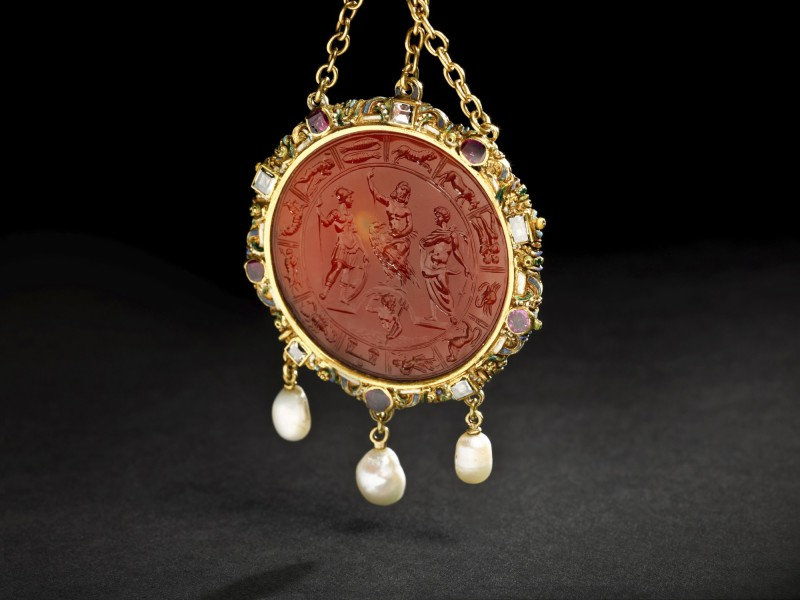
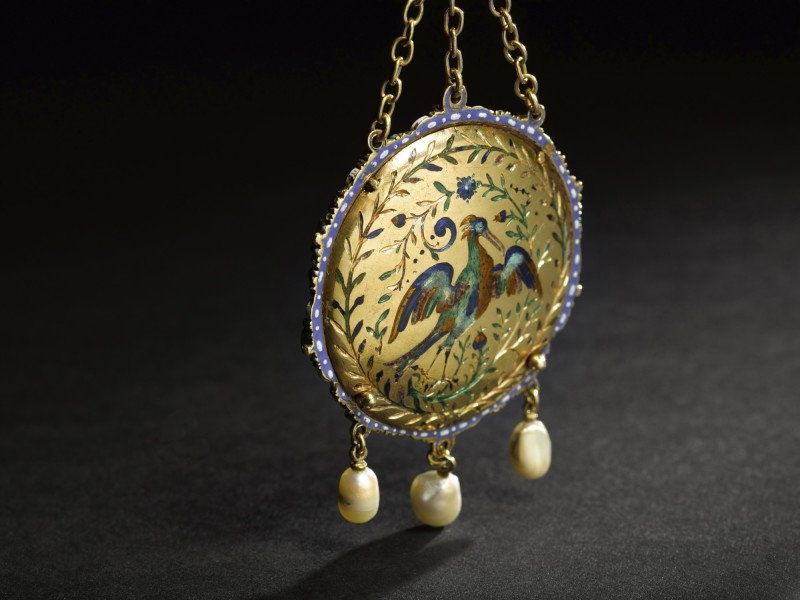

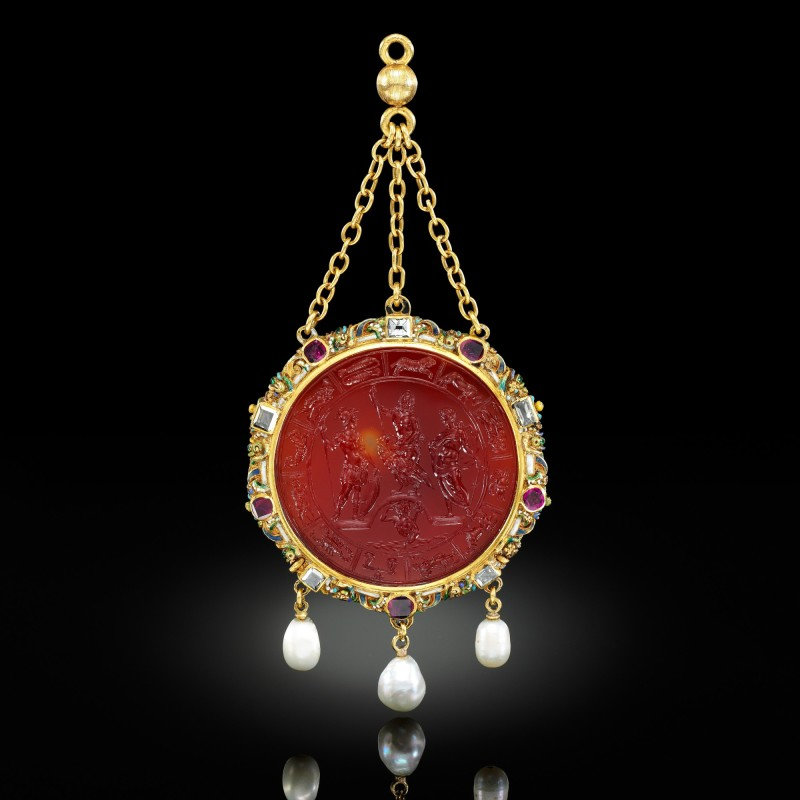
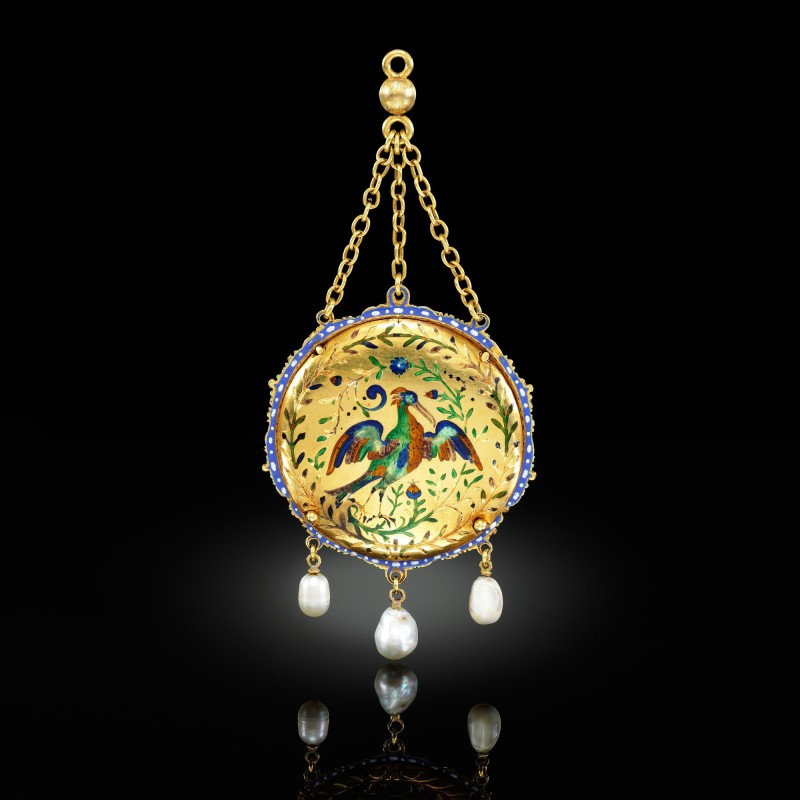


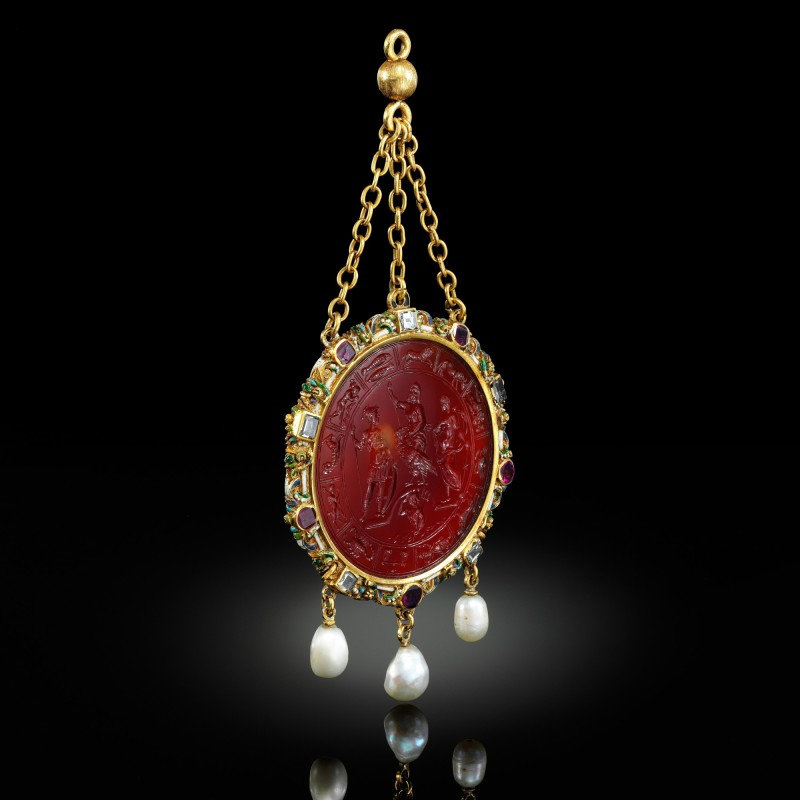





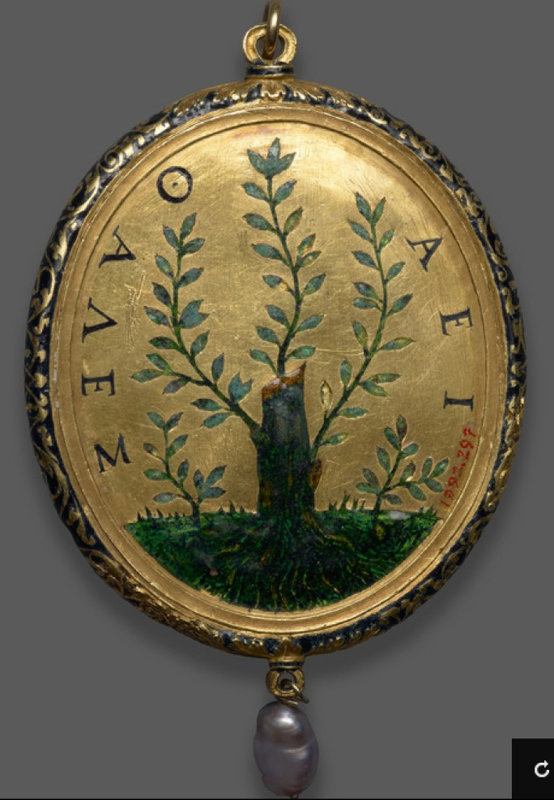




/http%3A%2F%2Fstorage.canalblog.com%2F34%2F45%2F119589%2F126425513_o.jpg)
/http%3A%2F%2Fstorage.canalblog.com%2F56%2F28%2F119589%2F122132267_o.jpg)
/http%3A%2F%2Fstorage.canalblog.com%2F65%2F57%2F119589%2F120664915_o.jpg)
/http%3A%2F%2Fstorage.canalblog.com%2F57%2F05%2F119589%2F111930948_o.jpg)